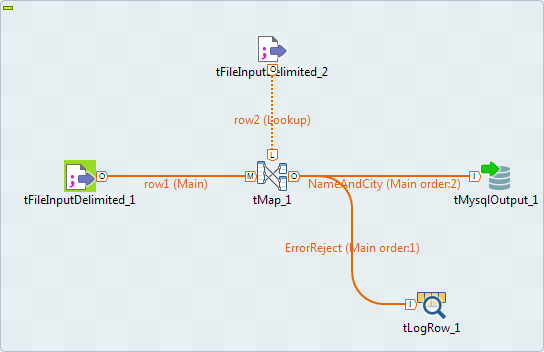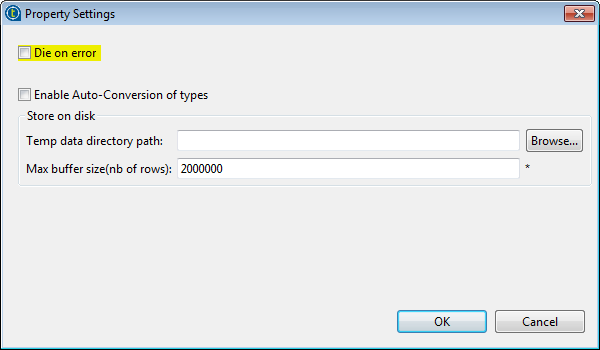Handling errors
About this task
The Die on error option prevents error to be processed. To do so, it stops the Job execution as soon as an error is encountered. The tMap component provides this option to prevent processing erroneous data. The Die on error option is activated by default in tMap.
Deactivating the Die on error option will allow you to skip the rows on error and complete the process for error-free rows on one hand, and to retrieve the rows on error and manage them if needed.
To deactivate the Die on error option:
Procedure
Results
You can also drag and drop columns from the input tables to this error reject output table. Those erroneous data can be retrieved with the corresponding error messages and thus be corrected afterward.

Once the error reject table is set, its corresponding flow can be sent to an output component.

To do so, on the design workspace, right-click the tMap component, select Row > ErrorReject in the menu, and click the corresponding output component, here tLogRow.
When you execute the Job, errors are retrieved by the ErrorReject flow.

The result contains the error message, its stack trace, and the two columns, id and date, dragged and dropped to the ErrorReject table, separated by a pipe "|".
Did this page help you?
If you find any issues with this page or its content – a typo, a missing step, or a technical error – let us know how we can improve!

